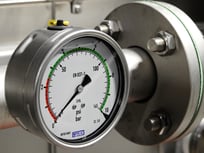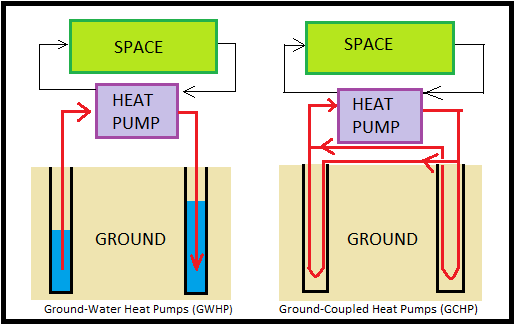
A large healthcare client of ours recently opened a brand new USP 800 compliant compounding pharmacy, which we commissioned. We collaborated with the engineering team and the hospital during the design phase to help ensure prior issues weren’t repeated, and the hospital’s concerns were thoroughly articulated and addressed. At the conclusion of the design phase, the team was confident that the design direction was solid and would give the hospital what they were looking for.
The first head-scratcher came when the pharmacy air handling unit (AHU) could not maintain its discharge air temperature (DAT) setpoint. The design utilized an AHU and a dedicated chiller with a buffer tank to condition the pharmacy. The AHU was fitted with a 10-row cooling coil, selected to supply 48-degree air to ensure it could handle even the most demanding dehumidification loads. The pressure independent balancing valve on the AHU’s chilled water coil was rated for design flow (70 gallons per minute) between 2 psi and 45 psi of pressure drop. The TAB (testing, adjusting and balancing) contractor dialed in the chiller pump speed to about 48 Hz and achieved 2.98 psi. He did a nice job in trying to minimize the pumping speed while maintaining flow. After all, a pressure independent balance valve guarantees the rated flow at the rated pressure drop…or does it?
air handling unit (AHU) could not maintain its discharge air temperature (DAT) setpoint. The design utilized an AHU and a dedicated chiller with a buffer tank to condition the pharmacy. The AHU was fitted with a 10-row cooling coil, selected to supply 48-degree air to ensure it could handle even the most demanding dehumidification loads. The pressure independent balancing valve on the AHU’s chilled water coil was rated for design flow (70 gallons per minute) between 2 psi and 45 psi of pressure drop. The TAB (testing, adjusting and balancing) contractor dialed in the chiller pump speed to about 48 Hz and achieved 2.98 psi. He did a nice job in trying to minimize the pumping speed while maintaining flow. After all, a pressure independent balance valve guarantees the rated flow at the rated pressure drop…or does it?
 After a fair bit of data analysis (there was great data available for this system which always helps!), it was clear that there was a chilled water (CHW) flow issue. The CHW temperature change was consistently around 12 or 13 degrees, the CHW valve was 100% open, and the mixed air conditions were not beyond the coil’s selection criteria, yet the AHU was consistently 4 or 5 degrees above design. The TAB contractor, mechanical contractor, construction manager, and I met on site and started with the balancing valve – still 2.9 psi. I asked the TAB contractor to put an ultrasonic flow meter on the pipe (which we talked about ahead of the site visit to ensure he had the equipment available) and we discovered that, rather than getting 70 gallons per minute (GPM) as stamped on the valve, we were getting around 50 GPM. There was a lot of speculation about air in the pipes and the glycol solution messing up the readings, because a pressure independent balance valve guarantees the rated flow at the rated pressure drop, right? I knew though, from data analysis and my engineering “Spidey sense”, that there just had to be a water flow issue.
After a fair bit of data analysis (there was great data available for this system which always helps!), it was clear that there was a chilled water (CHW) flow issue. The CHW temperature change was consistently around 12 or 13 degrees, the CHW valve was 100% open, and the mixed air conditions were not beyond the coil’s selection criteria, yet the AHU was consistently 4 or 5 degrees above design. The TAB contractor, mechanical contractor, construction manager, and I met on site and started with the balancing valve – still 2.9 psi. I asked the TAB contractor to put an ultrasonic flow meter on the pipe (which we talked about ahead of the site visit to ensure he had the equipment available) and we discovered that, rather than getting 70 gallons per minute (GPM) as stamped on the valve, we were getting around 50 GPM. There was a lot of speculation about air in the pipes and the glycol solution messing up the readings, because a pressure independent balance valve guarantees the rated flow at the rated pressure drop, right? I knew though, from data analysis and my engineering “Spidey sense”, that there just had to be a water flow issue.
Next step was to bring up the pump curve for the chiller-mounted pump and check its operation. We found two ports that were acceptable for obtaining the pump’s differential pressure (DP). So, we measured it, put it on the curve, and low and behold, it told us we should be getting 50 GPM.
Despite the reading across the balancing valve, we were 20 GPM short, as corroborated by the ultrasonic meter and the pump curve. We ramped up the pump speed until we saw a fairly consistent 70 GPM on the ultrasonic meter and we left it there. The balance valve read about 10 psi in this condition. By the way, there are three pressure independent balancing valves we were able to use independently of one another and they all read the same DP each time we took a reading. It wasn’t a bad valve.
The takeaway for me is that if it looks like a flow issue and smells like a flow issue, it’s probably a flow issue, despite what the calibrated balancing valve tells you. I trusted my data and my engineering “Spidey sense” even though there was a device that was telling me otherwise. As a result, we fixed the issue.
In Part 2 I’ll tell you about “laggy” controls, mysteriously resetting set-points, and why we, at Cx Associates, do everything we can to avoid mixing manufacturer’s proprietary controls with a Building Automation System.



